Meet the head greenkeeper: Cathcart Castle’s Scott Davidson
Scott talks about improving the course’s drainage and therefore the greens, renovating the bunkers and trialling new grasses on a redundant green.
Cathcart Castle GC, just south of Glasgow, was established in 1895 with a James Braid-designed golf course that is played over undulating parkland and which offers a challenge to all levels of golfer. The course is surrounded by picturesque and panoramic views of the city of Glasgow, and further afield, including even Loch Lomond, more than 30 miles away.
We spoke to the club’s head greenkeeper, Scott Davidson, about the challenges involved in maintaing this venue.
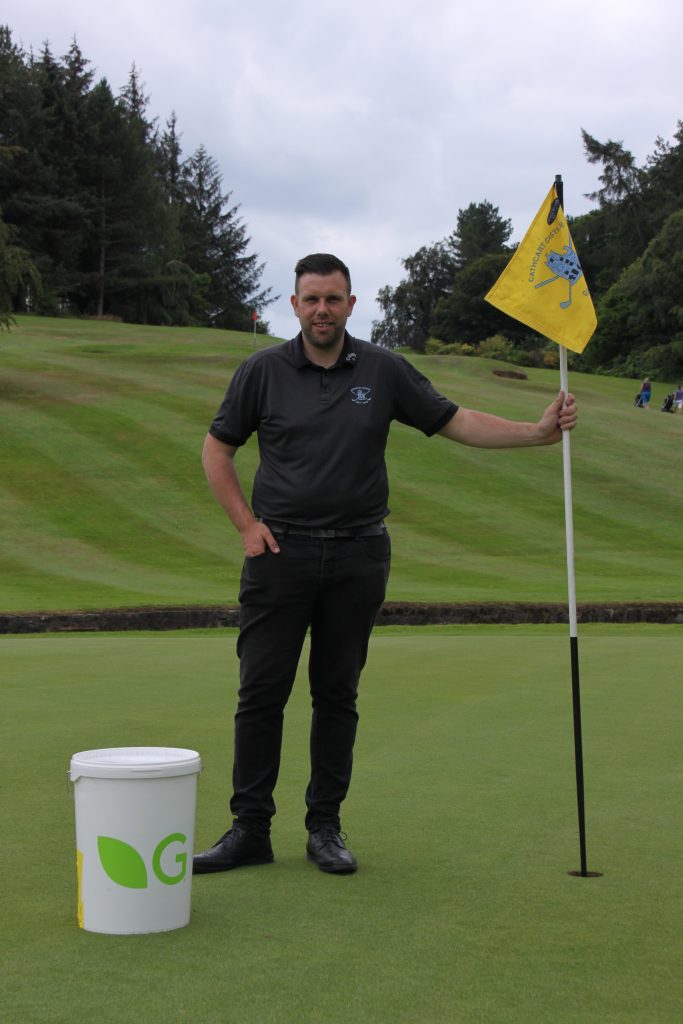
How did you become the head greenkeeper at Cathcart Castle?
I got into greenkeeping through my stepdad at the age of 15 when I started getting involved with bowling green renovations and maintaining surfaces during weekends and holidays from school. I started my apprenticeship at Hazelhead GC in Aberdeen; after a three-year apprenticeship I went on the Ohio State Programme where I did an internship at Sea Island, Georgia and at Nashawtuc CC in Boston, and from there I worked at Huntingdale GC in Australia which held the Australian Masters the year I worked there. From there I returned to Scotland to work at Royal Aberdeen for four years and while I was there we held the Walker Cup, before I moved on to take the deputy head greenkeeper’s position at Newmacher GC, where I worked for just over three years. I then became deputy head greenkeeper at Schloss Nippenberg in Stuttgart, Germany, before returning to Scotland as deputy head greenkeeper at Aboyne GC.
Now I’m currently at Cathcart Castle GC, where I have been working for the past four years as head greenkeeper.
I also studied SVQ level 2 and 3 in sports turf management at Elmwood College, also while at Newmacher GC I partaked in the Future Turf Managers Initiative ran by BIGGA and Ransomes Jacobsen. Currently I am studying by distance; learning an HNC in golf course management where I have received an R&A scholarship to support my studies.
How big is your team?
I have a team of five greens staff that consist of Chris Locke (deputy head greenkeeper), Gerry Meiklejohn, Neil Plenderleith and Kyle McGowan (assistant greenkeepers) and Greg Mitchell (apprentice greenkeeper). I delegate a variety of jobs and try to have all staff trained up on all aspects of greenkeeping, so I maintain a flexible team. Our key factors are attention to detail to produce high quality turf surfaces. It’s the main thing I reiterate to the staff on a daily basis as this has made a big improvement to the course over the last four years.
You decided to reinstate a redundant green on the course to use as a trial site for the latest generation of creeping bent grasses. What are you looking to achieve?
The thought process behind the trial site was to see how creeping bent grass germinated and developed as a plant, along with the development of a healthy sward. I also wanted to see the reaction to disease pressure in a Scottish climate.
My main focus has been to reduce fungicide usage over the last four years and I wanted to observe how the 007 and 777 are disease tolerant. I want to take note of the organic matter levels it produces. We have run this creeping bent grass trial along side our current browntop bent choice of seed, which is AberMajesty. At Cathcart Castle we also receive fox damage on several greens and this will give us an area we can use to plug out the damage instead of using the edge of the putting green, which we currently do.
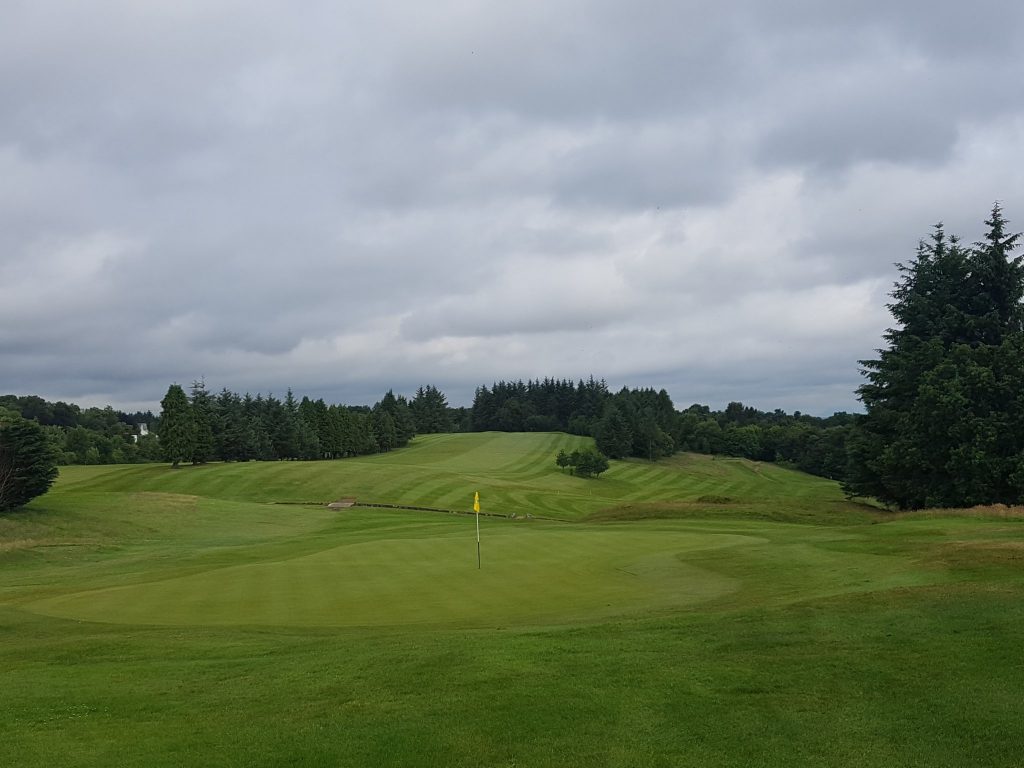
The course has a mixture of USGA and push-up greens, some of which have suffered drainage issues. What caused the problems and what have you done to remedy them?
When I first joined Cathcart Castle we investigated every green individually to see what problems were occurring. We found a number had black layer and high organic matter content and the majority of the greens didn’t drain well due to a number of issues. My thought process was to relieve surface compaction and start tackling high organic matter content which was 11 to 12 per cent and we have reduced this to five per cent organic matter. Along side our areation practices we have started a process of introducing pipe drainage to the soil-based greens. Along with inserting a new draining system into the greens, our continued aeration programme with different methods, including solid tining, hollow coring and air injection, has seen a big improvement to the greens’ surfaces by way of firmness and quicker percolation rates. Also, to work alongside these practices our regular top-dressing programme has been implemented.
You and the team have worked hard to reduce the organic content of the greens over four years. In order to accomplish this, what regime and combination of practices have you used?
I started with changing the fertiliser programme and reducing the amount of nitrogen that was being applied and now we target 80-100g of nitrogen per year per hectare. We also target about 120 tonnes of kiln-dried sand per year.
In the first two years we adopted a heavy aeration programme – the greens were struggling with a high organic matter level and were very soft. We also had black layer in the soil profile. I knew straight away I had to get as much oxygen into the profile to reduce the black layer and we started with some deep solid tining to a depth of nine to 10 inches whilst also removing some organic matter through scarifying and hollow coring. In the summer months we use the Air2G2 air injection system, which is brilliant as the machine minimises surface disruption.
We use a variety of tines across the year at various depths but generally in the summer months it’s an 8mm solid tine and during August renovations we use a 10mm solid tine. Previous renovation years we have been using a 12mm hollow core but in 2019, due to our organic matter levels, we dropped down to a 8mm micro core.
During the winter months we regularly solid tine with a 12mm tine and even some greens have received a 22mm solid tine if needed.
Over the four years we have seen our organic matter reduce from 12 per cent on some of our worst greens to five or six per cent now.
In tandem with reducing organic matter and thatch, you’ve been running an overseeding programme. What cultivars did you opt for?
Once our organic matter levels started to drop I wanted to start to improve our sward composition. We already had a good amount of bent grass in the greens due to previous overseeding and I favoured to keep this up with the AberMajesty that is a composition of two browntop bent grasses. The results we have seen have been great and we continue to do a May / June overseed at 4gm/m2 and a August overseed at 4gm/m2.
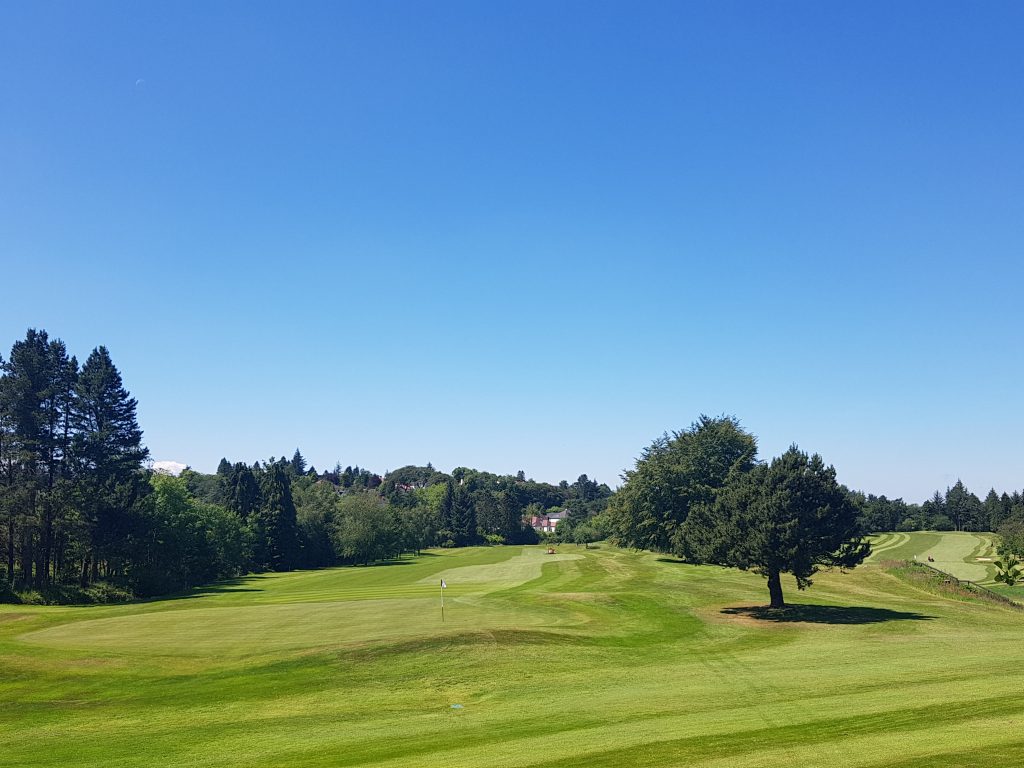
With disease control now being such a challenge what results do you hope to find from the creeping bent trials you are running?
The trials were put in place to see the resilience the 007, 777 and AberMajesty have to certain diseases. The turf industry is under so much pressure now with the removal of certain chemicals. My thought process was if we can overseed greens with grass species that are more resilient to diseases like fusarium and anthracnose, this will also help us reduce the input of fungicides. At Cathcart Castle we try to use turf hardeners and we have been running some tests on the trial site to see which combinations work best.
How closely do you work with Germinal and what value do you place on the relationship?
Cathcart Castle and Germinal have a good working relationship and we have used various different seeds over the years. At the moment we have been using AberMajesty on our greens and approaches. We have also used some ForeFront Greens on some greens that have a thinner sward and have some shade issues.
What aeration programme are you running across the course?
We mainly use our Wiedenmann Terra Spike GXI 8 as it’s so versatile. In the summer months we us a 8mm solid tine and Air2G2 on the greens. The last week in August is when we have an agreed maintenance week with the club which is great as we give the greens a scarify with a 12mm solid tine and a 12mm hollow core, but in 2019 we used 8mm micro cores and then an overseed. This window is perfect as being allowed to do these renovations early is great for recovery, as this is usually one to two weeks.
You’re running a bunker renovation programme. How many bunkers does the course have and how are you going about this?
Cathcart Castle currently has 42 bunkers, which mainly have contaminated sand due to no liners being used. Our biggest problems are stone contamination and sand depths. We started a bunker renovation programme in the winter of 2017/18, which entails the use of Polylast Bunker Liner and EcoBunker products.
We have completed five bunkers to date with another three bunkers planned this winter. Members are happy with the new bunkers; the general consensus is that this process has greatly improved the quality of bunkers at Cathcart Castle, which has improved draining and minimised contamination.
Overall, it has improved the condition of our bunkers.
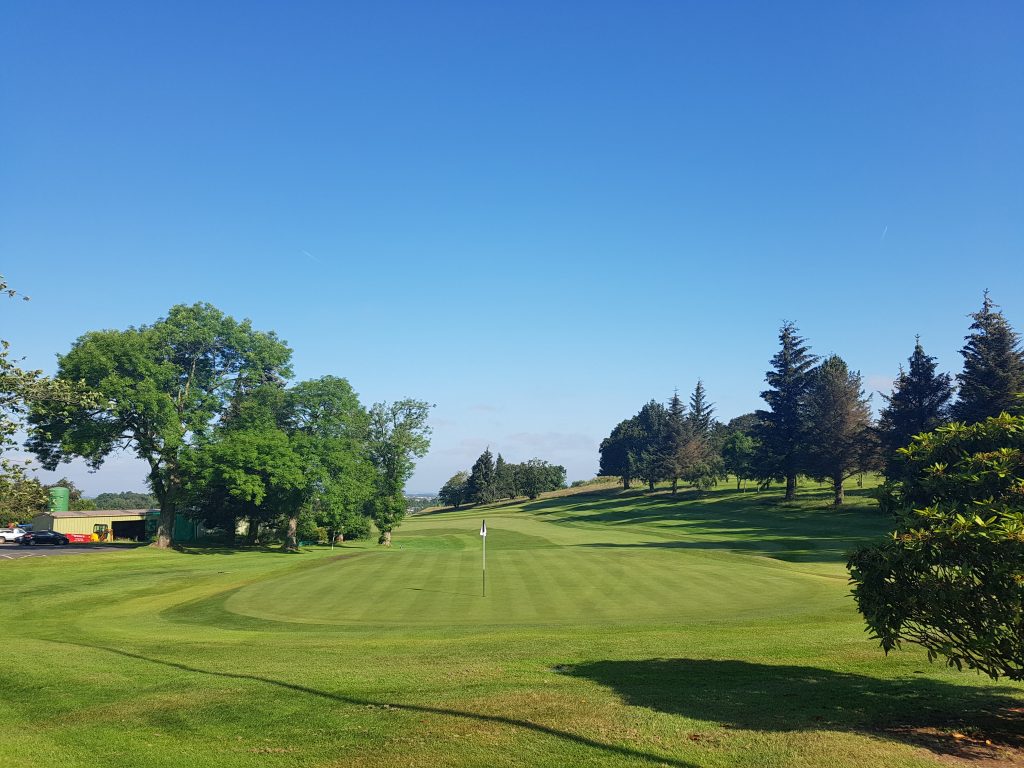
There’s an abundance and dense population of trees across the course. How you currently manage these and what are the future plans?
Yes, we have a vast amount of trees around the course that cause many problems from blocking drainage to casting shadows, as well as removing moisture from the playing surfaces. It’s been difficult as some of the members don’t see some of the problems. Some areas of the course receive no sunlight during the winter months and playing surfaces start to thin out. In the last four years we have started a programme of raising the canopies to about six feet and started thinning out dead or diseased trees.
What height of cut do you use across the course?
Greens are normally 3-4mm in the summer months. Generally we are 3.5mm but for club competitions and tournaments we have gone down to 3mm. In winter it’s 5-6mm. Greens are cut by hand – three guys, three hours, so generally we spend 50 hours a week on greens. I try to give them a rest one day a week and at the weekend we triple cut, which takes about two and a half hours.
The tees are normally cut at 11mm, twice a week and receive Primo Maxx on a three-week cycle. Approaches are cut the same height and done at the same time as tees, 20 hours a week
The fairways are normally cut two or three times a week and I allocate 14 hours a week to fairways.
We cut a intermediate pass of rough at 22mm just off the fairway with a John Deere 2653b and then rough with the Ar522 at 40mm.
Generally, we allocate 35 hours a week to rough.
What do you think are the strengths that have carried you through your career and current position at Cathcart Castle Golf Club and how do you look forward to keeping the course evolving?
I feel I have a broad range of experience from working abroad and in the UK. I have had experiences at golf clubs with tight budgets to clubs that have vast resources and have tried to use this in my day to day management at Cathcart Castle. It was great to see so many different cultures when I was younger and every golf club has a different way of working. I’ve tried to cherry pick the best bits but also learn from the mistakes I’ve seen and even done myself. We try to do as many winter projects in-house to reduce costs and only hire in machines and operators where needed. We have just finished pipe draining green number seven – in our first year we did one as a trial and then two greens a year since. I’m looking to keep the club evolving by improving the conditions of the surfaces year on year.

Training and education are key to developing a good team, what do you do to ensure you are investing in raising the standard of practice and performance of your team members?
We try to manage every team member individually and ask them what they want to learn and achieve. In the last few years we have employed two apprentices and put them through training courses. Two team members have been put through their spraying certificates and we have also put various members through their chainsaw certificates.
The club has also supported me in distance learning through Elmwood College as I complete my HNC in golf course management and I work towards my HND, which I’m really grateful for. I was also delighted to receive an R&A scholarship in 2018 to support my studies.
The pressures on the course manager to deliver a better product are growing year on year and the level of professionalism is rising with this. What do you think are the qualities now needed to meet the requirements and demands of golfers by someone in your position and how does this help contribute to the business of golf?
I think a course manager needs to be well rounded and think of the business as a whole, not just the course. Budgets are being tightened year on year – as expectations grow – and the planning for the future of the course and the club is essential. I think with the rise of social media and coverage of the game on Sky TV, this has lifted the expectations on course mangers by players / members.
Course managers are now heavily involved with budgeting, club development, social media and health and safety, before stepping foot onto the golf course. As the course manager’s position has evolved, I feel a lot of credit has to go to how greenkeepers promote the industry now. Historically members looked upon you as just grass cutters – but now we are seen as managers.
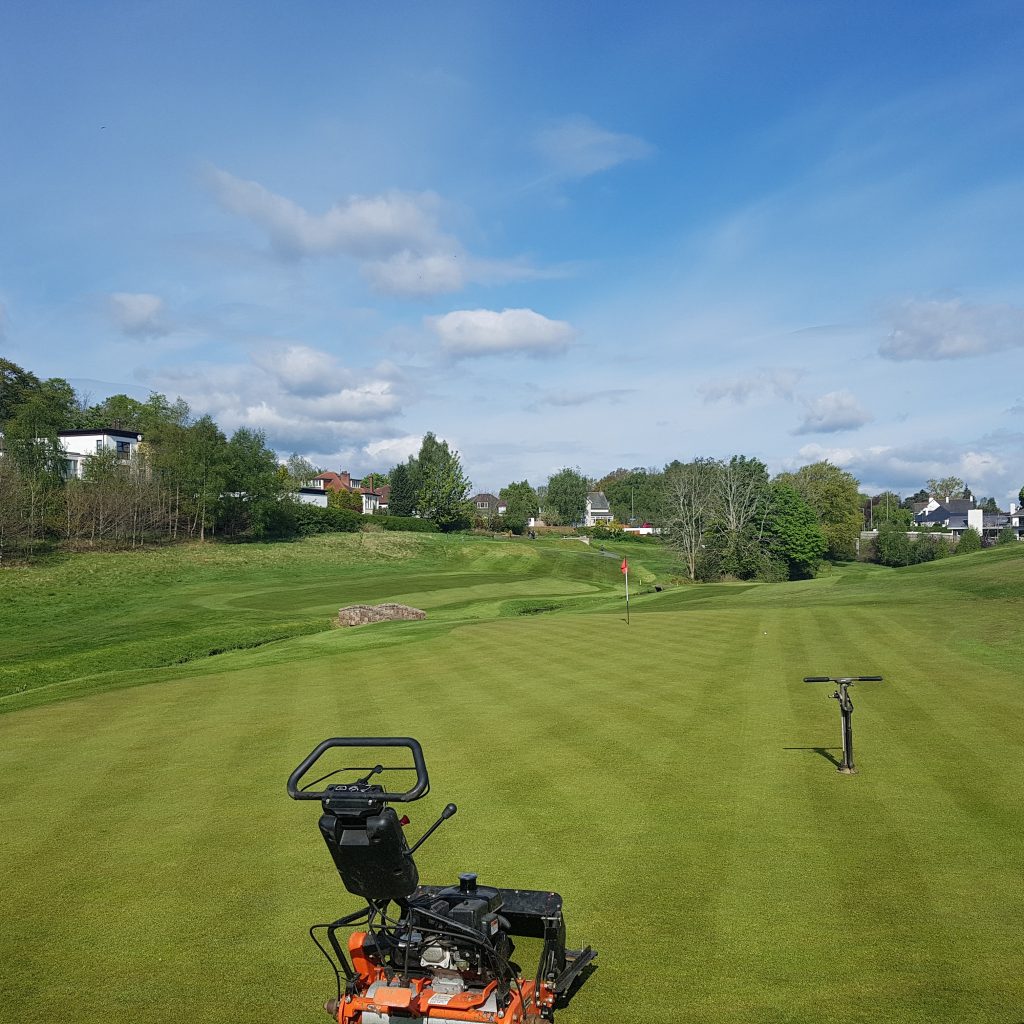
Is there a particular machine that you have a preference for?
I can’t choose a favourite as I have two! I love the 15 blade PGM hand mowers. The quality of cut they give is brilliant and have helped improve the greens vastly and I love the presentation hand mowing gives off. In January 2019 we purchased a new LF 577 fairway mower; this machine has given us the options to collect our clippings off fairways, which has added extra help in the attention to detail and with the hope in reduction of weed infestation. I love the quality of cut but also the time this machine saves for us as we can get all our fairways cut and boxed by 10am, meaning we can free up time for other jobs around the course.
What currently gives you the greatest satisfaction from your job, how do you feel daily when you are moving around the course looking at what you and the team have achieved and what do you feel are your biggest achievements to date?
It gives me great satisfaction on what we have achieved here so far but I also feel it’s only the start of the jigsaw puzzle; there are many more years of hard work to go before I see Cathcart Castle where I vision it. We have a lot of areas around the course we still need to improve from rough management, tree management and refining surfaces across the course to the bunker renovations’ programme advancing.
To date I feel our biggest achievement is the greens – we have put many hours into them and to see them go from soft and thatchy and holding water at 12 per cent organic matter to firm true surfaces at five per cent organic matter is hugely satisfying as it was a tough task. The first year was the toughest; trying to explain the change in management of the greens to the members and the amount of work we had to carry out to the surfaces. Some members didn’t accept the problems but the majority of the members embraced it and it’s great to hear comments to my team saying this is the best the greens have been in 40-plus years four years down the line.
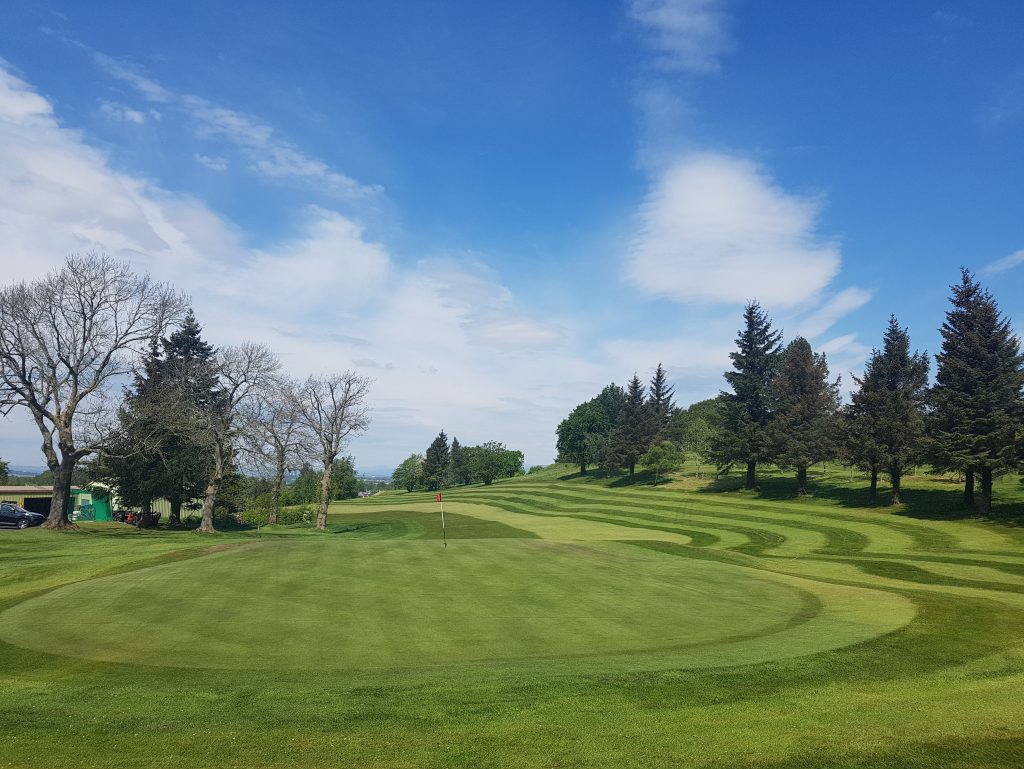
What advice would you give to youngsters starting out and wanting to pursue a career in the profession?
My advice to any young greenkeeper is: never be afraid to ask questions, listen to your colleges and retain as much information as you can. Take pictures and keep a journal of the work you have undertaken. Don’t be afraid to step out of your comfort zone, experience different cultures and grasses in different climates. Volunteer and experience some tournament work – it doesn’t have to be a PGA Tour event that has over 100 volunteers; helping the local nine-hole head greenkeeper prepare for a club championship can be just as worthwhile an experience. And try to take in as much education days as you can.
You are the BIGGA west of Scotland chairman. What have you learnt since holding this position and how do you feel it adds to your learning and career path?
Scott Davidson: I’ve been holding the position over the past three years – it’s been a tough ask with my first head greenkeeper’s job, the fact that I’ve started studying again and also moving home and getting married. I’ve enjoyed every minute of it, even if it’s been difficult at points and it has helped me massively with management and planning tasks. It’s giving me more confidence and helped me grow as a person and a head greenkeeper. It has also given me vital experience in giving presentations, which I take back to the golf club. With a bit more spare time on my hands I look forward to giving more to the position and gaining more experience from it.
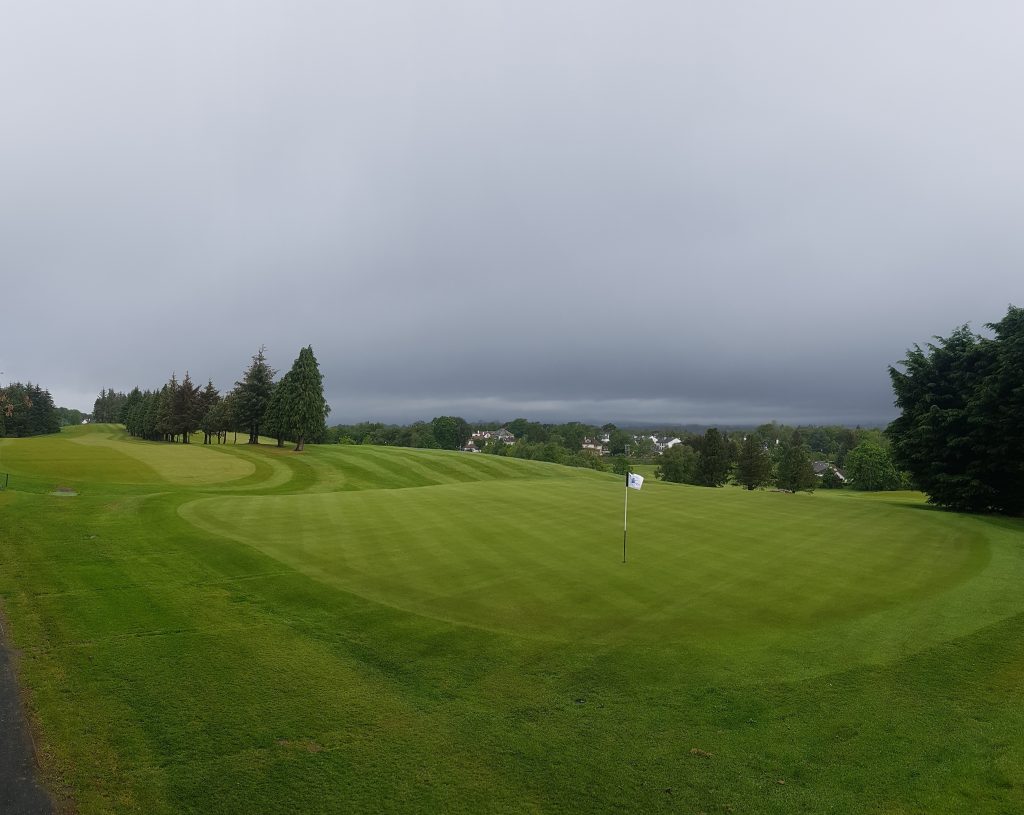
What changes do you think need to be made to benefit the industry sector and profession of the greenkeeper?
Some of the changes I feel the industry needs to see is money in the game of golf filtering down to the lower levels more to help clubs and to entice the next generation of golfer. We see far too often kids wanting to play games consoles and it’s a struggle to get them involed with golf.
In the greenkeeping industry we need to keep developing communications between greenkeeping departments and the members, and making sure every course manager has a seat at committee meetings as at some clubs you have unqualified personnel trying to tell the course manager what should be done.
I would also like to see the development of training improved to go more in-depth to students. Also, one subject that should be included, is the breakdown of fertilisers and how they work, with focus on the nitrogen cycle.















Let me tell You a sad story ! There are no comments yet, but You can be first one to comment this article.
Write a comment